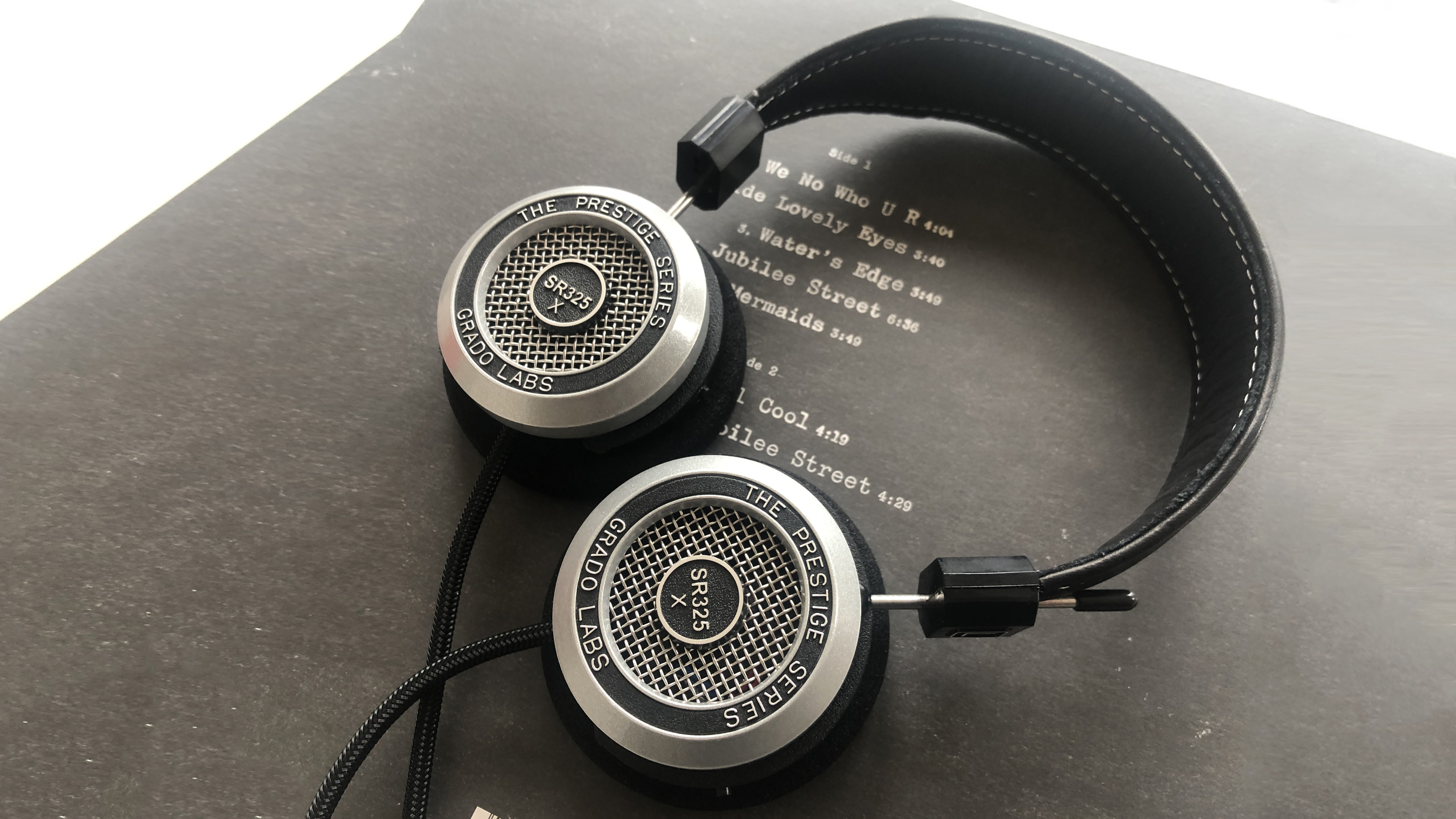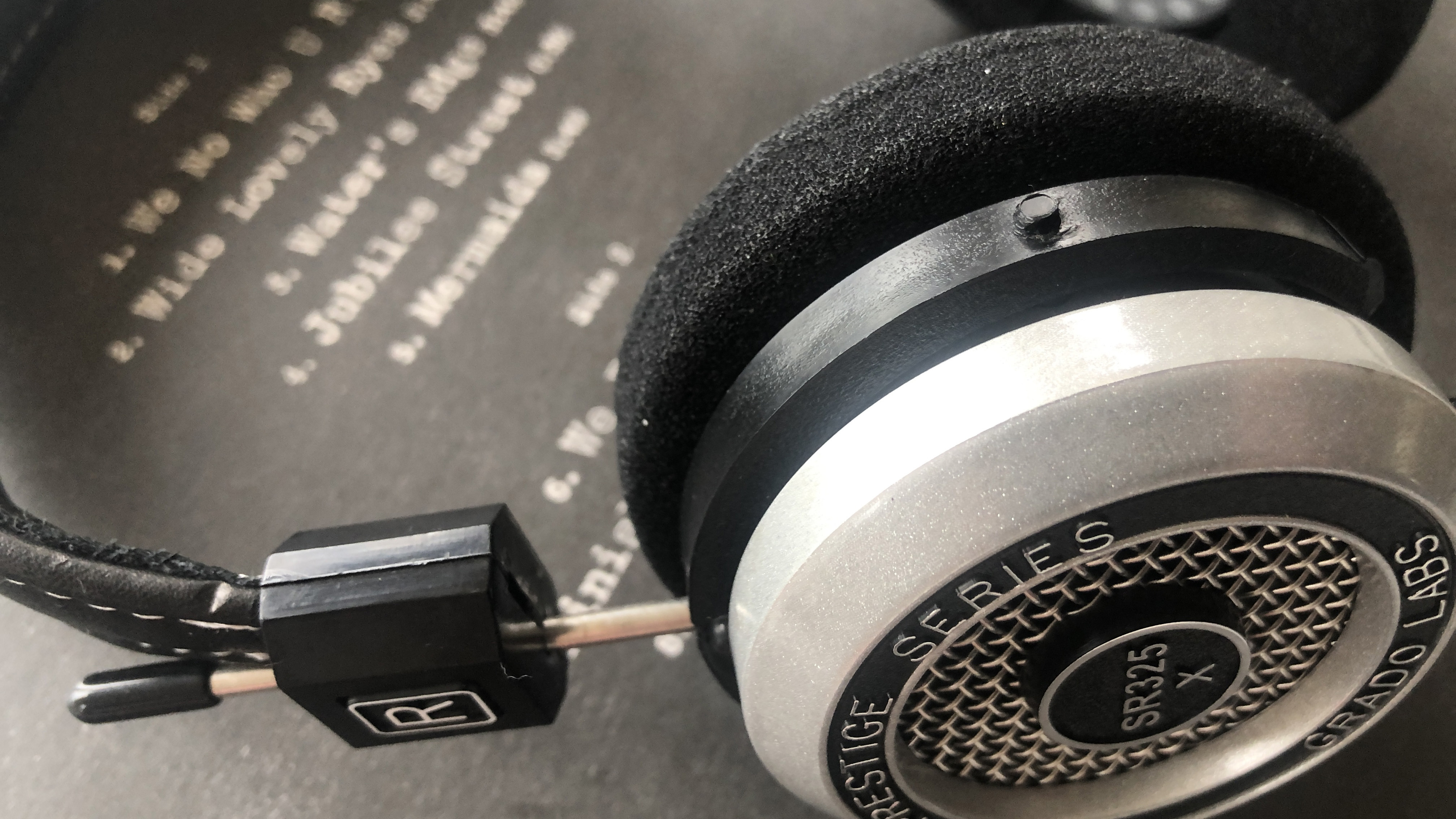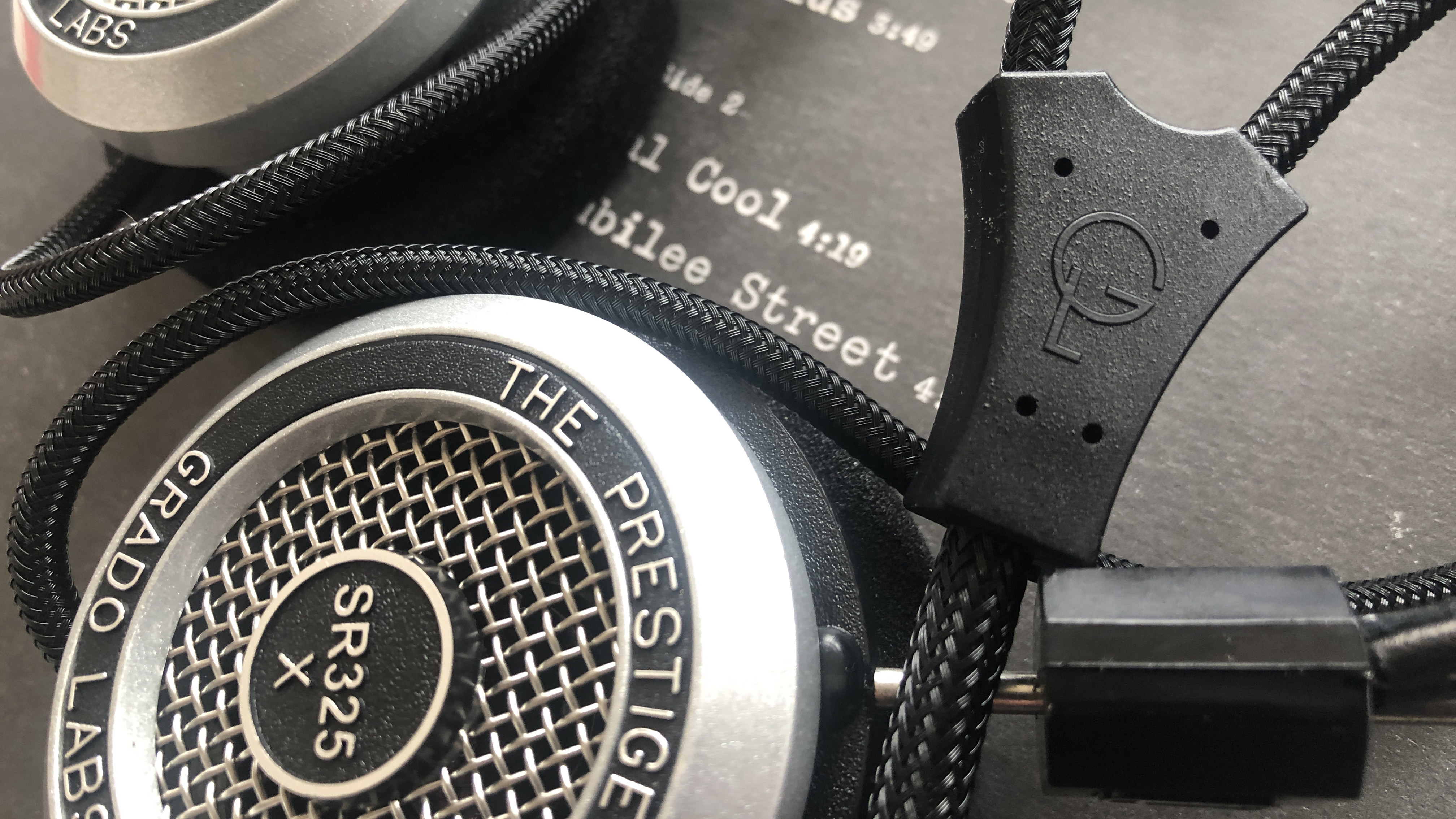Grado SR325x review: Open-backed awesomeness
Are these the best open-back wired-only headphones your hard-earned cash can buy? They very well might be


Yes, you have to make allowances and accommodations. No, you won’t be very popular if you decide to use these headphones on a commute. But where fidelity and simple musicality are concerned, it’s difficult to know how you could better spend your money.
-
+
Clarity, fidelity and eloquence to spare
-
+
Brilliantly balanced and convincing presentation
-
+
Sturdily made
-
-
Wilfully old-school looks
-
-
Wired and then some
-
-
Open-backed configuration is anti-social
Why you can trust T3

Grado is rapidly approaching its 60th birthday, and it’s fair to say that in all that time the company has seldom put a foot wrong where the sound of its best headphones is concerned. When talk turns to pure sound quality, the Grado model at any given price point will usually be a part of the conversation.
As far as the aesthetic appeal of its products goes, though, very little has changed at Grado in the last six decades. Oh, the company is more than willing to embrace new materials and new technologies – but as far as the appearance of its headphones goes, Grado is stubbornly sticking to the template. ‘Retro’ is a nice way to describe it. ‘Old-fashioned’ is a slightly less nice, but equally valid, description.
The ‘Prestige Series’ of Grado headphones has often been the sweet-spot of the entire range. And of the latest Prestige Series models, it’s this SR325x that’s the most expensive and the most high-performance of the lot. But, as we said, Grado sound quality is seldom in doubt.
Grado SR325x review: Price and release date
The Grado SR325x are on sale now, and in the UK they’ll typically set you back £275. In Grado’s native United States they’re priced at $295, while in Australia you’re looking at AU$425 or so.
Obviously that price needs to be put into context. The reputation of Grado’s Prestige Series stands the SR325x in good stead. But unlike the vast majority of alternative over-ear headphones this sort of money can buy, this model doesn’t seem – at first glance, at least – to have much to do with the 21st century. To be honest, there’s a possibility your money might buy you rather more Grado SR325x than you feel you require.
Grado SR325x review: Features and what's new?

Even when we’re discussing the most cutting-edge, up-to-the-minute headphones, ‘features’ tends not to be all that long a list. And where the Grado SR325x are concerned, it’s a very brief list indeed.
As far as the business of ‘being headphones’ is concerned, Grado has made some significant (though not especially obvious) changes and upgrades. The 44mm dynamic transducer that actually delivers sound (it’s part of the fourth-generation ‘X’ series of Grado drivers) is a revised design, with new diaphragm, upgraded coil and reworked motor system.
Get all the latest news, reviews, deals and buying guides on gorgeous tech, home and active products from the T3 experts
The chunky, and heavily braided, cable that runs from both earcups is a new design too, with eight super-annealed copper conductors on the inside and a 3.5mm termination (there’s also a 6.3mm adapter, of course). The foam earpads are flatter than previously too.
Grado SR325x review: Performance and sound quality

Anyone who’s familiar with the way previous SR325 models perform will be pleased to learn this ‘x’ variation is the best yet. Those who’ve never heard any of the Grado SR325 should be assured that ‘the best yet’ translates almost directly as ‘the best headphones this sort of money can buy’.
We’re discussing performance here, so we won’t dwell on the various hoops you have to jump through to reconcile yourself with Grado SR325x ownership. Instead, we’ll just reel off all the very many areas in which these headphones excel.
As far as clarity and clean, uncoloured insight into a recording goes, there’s not a price-comparable rival that can lay a glove on the SR325x. They’re hugely detailed in every respect, peering deep into a recording to identify and deliver the most transitory information contained in it. They’re a luxuriously open and spacious listen (which is justification enough for the horribly anti-social ‘open-backed’ configuration), generating a real sensation of width and depth to their soundstage. And this is a soundstage that’s fearsomely well organised, simple to understand and entirely convincing.
Low-frequency extension is considerable but not showy or overstated – the Grado dig deep and hit hard, but the entry into and exit from bass notes is controlled with authority. The opposite end of the frequency range is bright but not brittle, with substance to balance out the bite. And, again, it’s properly controlled and integrated into the overall presentation.
It’s between these extremes, though, that the Grado make an unarguable case for themselves. The midrange here is eloquent in the extreme, giving vocalists of all styles and level of technical merit completely free expression. If there’s character, emotion, attitude or atmosphere within a singer’s performance, the SR325x are all over it. ‘Articulate’ only begins to describe it.
They’re similarly talented in every other meaningful respect, too. Dynamic headroom is considerable. Rhythmic expression is sure-footed. Tonality is consistent and entirely naturalistic. Even if you’re able to identify a genre of music with which the Grado aren’t utterly comfortable – the more aggressive and uncompromising end of EDM, maybe – they’re never less than composed, informative and entertaining listen.
This all assumes you’re doing the right thing, source-wise, of course. The SR325x don’t exactly throw in the towel if they’re connected to a sub-par music player, but neither are they about to flatter it. So don’t go thinking you’ll be able to scrimp on your source and get away with it.
Grado SR325x review: Design and usability

Look, we understand “if it ain’t broke, don’t fix it”. But is there really no space for “if it ain’t broke, at least try and make it look less like an antique”? At Grado Labs, apparently not. We jest.
At a glance, there’s next-to-nothing to distinguish the latest SR325x from the SR325 models that preceded them. In all honesty, there’s not a lot to distinguish them from headphones that were offered for sale 40 odd years ago. What your money buys you, fundamentally, is a system to suspend two high-performance drivers above your ears.
There’s nothing wrong, or even retrograde, with the way the Grado are built or finished, mind you. The leather headband isn’t overly padded but it’s both comfortable and tactile (and it has white stitching, let’s not forget). The housings are made from aluminium, which looks and feels good. The exposed headband adjustment ‘mechanism’ (if that’s not too fancy a description) is weighted nicely.
Although they’re an over-ear design, the SR325x don’t feel quite the way you might be used to or expecting. They sit on the ear rather than enveloping it, and the slim foam earpads feel less secure than the description ‘over ear’ might suggest.
As far as usability is concerned, there are a couple of significant factors to bear in mind. The first, of course, is just how assertively wired the Grado are – which means they’re not all that portable a proposition (which is for the best anyway) and targeted mainly as some of the best wired headphones you can buy. Not every portable audio player or smartphone has a headphone socket, after all, and even by prevailing wired headphones standards the cables fitted to the SR325x are chunky.
The other impediment to usability is the headphones’ open-backed configuration. There are solid acoustic reasons for this, of course – but a by-product is the amount of sound that leaks out of the back of the earcups. The very least you can expect if you decide to use your SR325x while out and about are a few challenging glances. It seems unlikely you wouldn’t annoy anyone you’re sitting next to on the train.
Grado SR325x review: Verdict

Ignore, if you can, the old school aesthetic and know that if all you want to do with your headphones is listen to them, then the Grado SR325x are among the very best pound-for-pound headphones available.
Yes, you have to make allowances and accommodations for their wired-only nature and open-back sound leakage. But that comes as part of the package. But where fidelity and simple musicality are concerned, it’s difficult to know how you could better spend your money.
Also consider
Grado doesn’t have the wired, open-backed, hair-shirted field clear, of course. Philips has recently resurrected its ‘Fidelio’ audio sub-brand, and its X3 headphones are an impressive part of it. Not as industrial in looks or materials as the Grado SR325x, they’re nevertheless an uncompromising product – and they sound excellent too. There’s not quite the ‘freshly cleaned window’ impression of sonic clarity the Grado can deliver, but these physically big headphones serve up an appropriately big sound.
Simon Lucas is a freelance technology journalist and consultant, with particular emphasis on the audio/video aspects of home entertainment. Before embracing the carefree life of the freelancer, he was editor of What Hi-Fi? magazine and website – since then, he's written for titles such as Wired, Metro, the Guardian and Stuff, among many others. Should he find himself with a spare moment, Simon likes nothing more than publishing and then quickly deleting tweets about the state of the nation (in general), the state of Aston Villa (in particular) and the state of his partner's cat.
